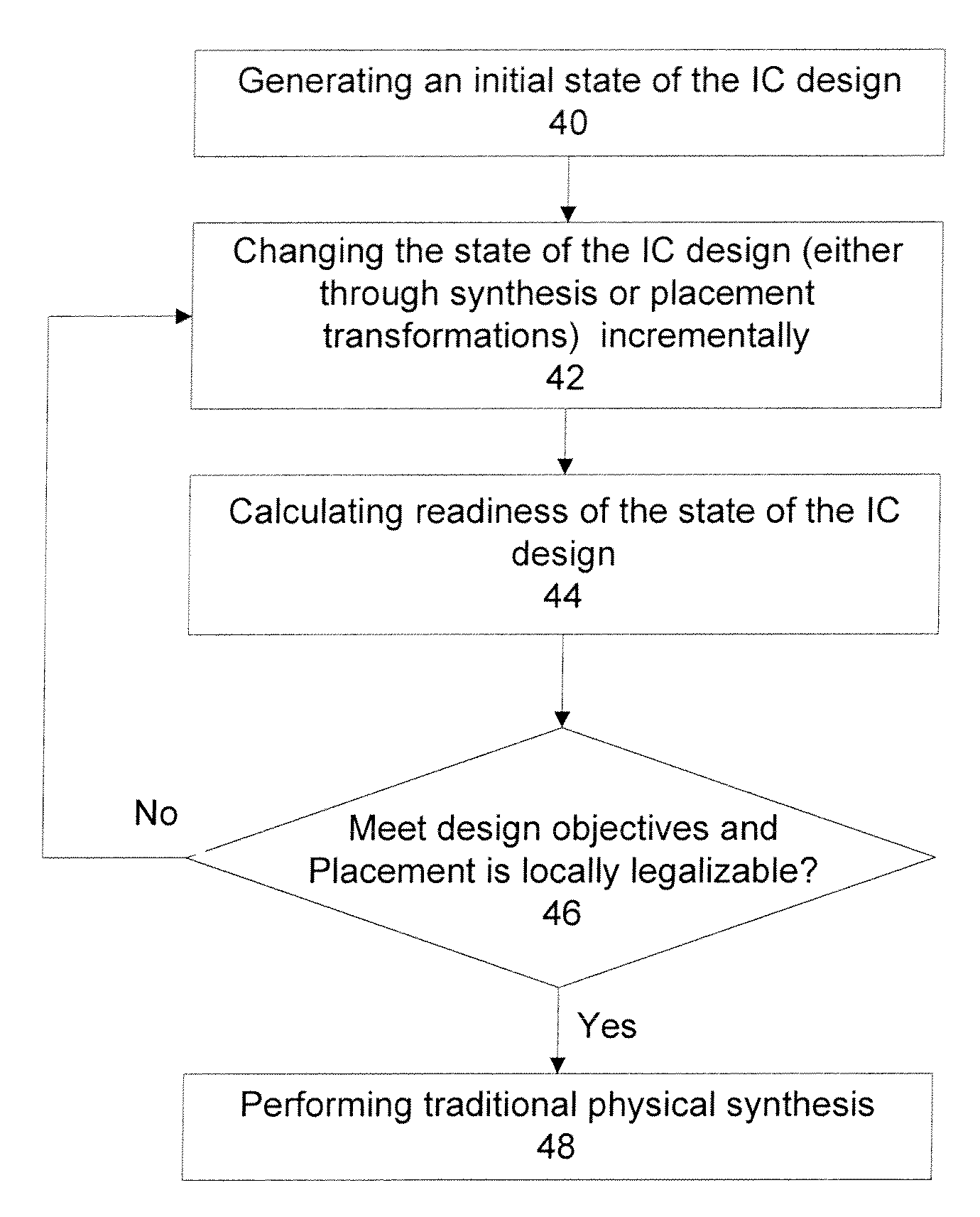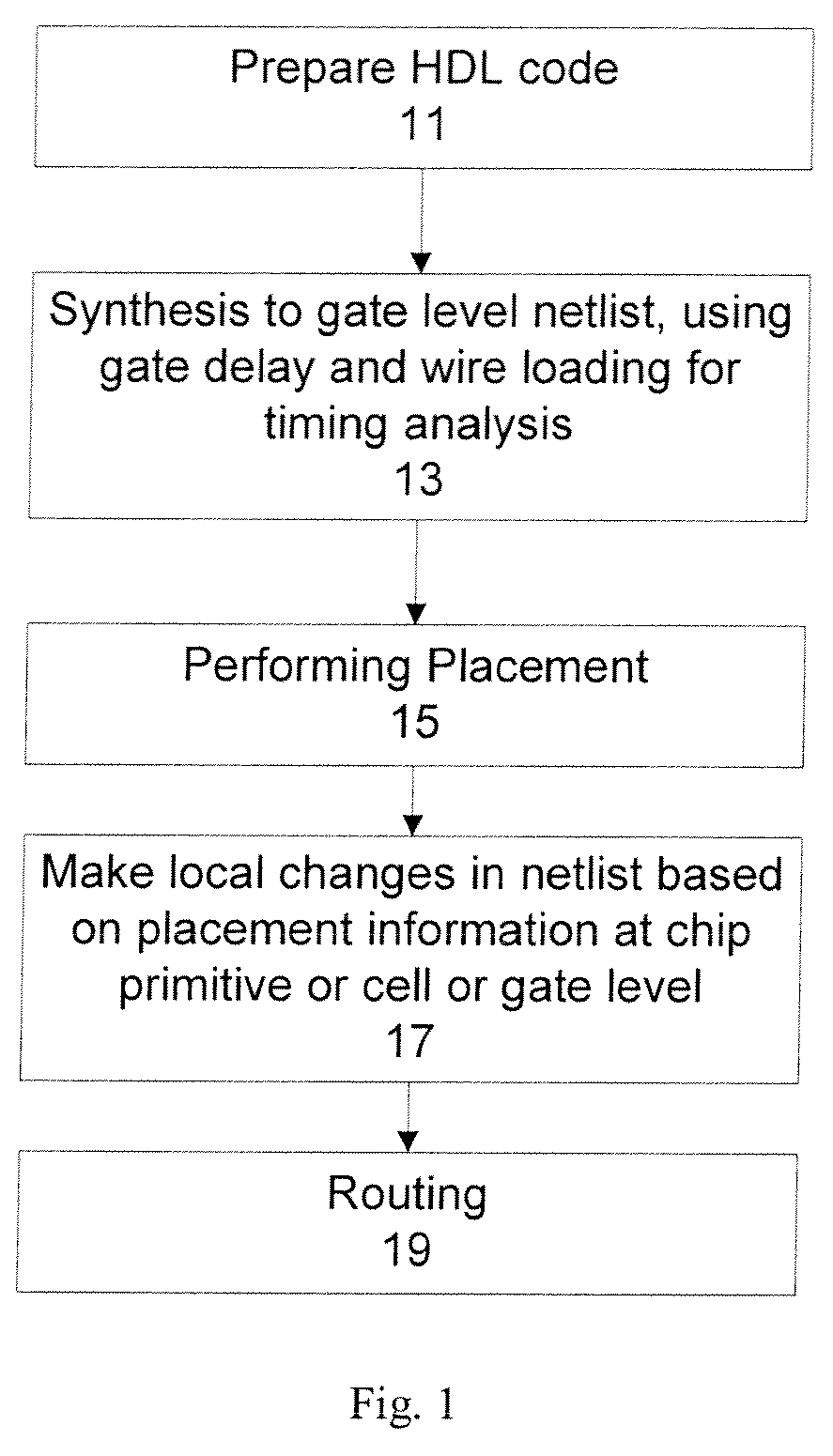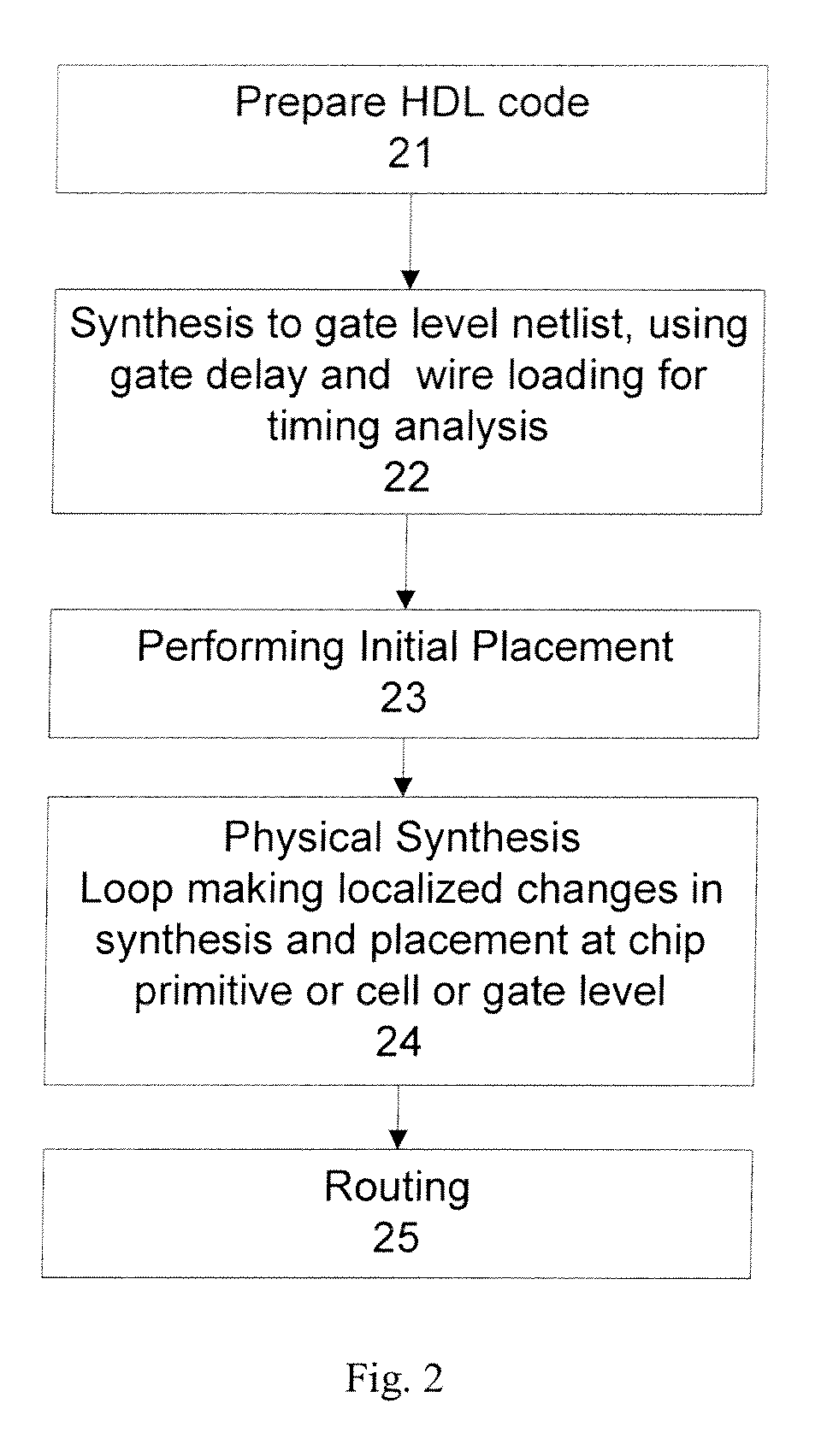Architectural physical synthesis
a technology of architectural physical synthesis and integrated circuits, applied in the direction of instruments, computing, electric digital data processing, etc., can solve the problems of not meeting the circuit design criteria, the physical layout of the circuit becomes significant, and the delay of the interconnection becomes significant, so as to improve the quality of timing and available resource estimation, improve placement metrics, and improve implementation quality
- Summary
- Abstract
- Description
- Claims
- Application Information
AI Technical Summary
Benefits of technology
Problems solved by technology
Method used
Image
Examples
Embodiment Construction
[0052]Methods and apparatuses for designing an integrated circuit or a plurality of integrated circuits are described herein. In the following description, for purposes of explanation, numerous specific details are set forth in order to provide a thorough understanding of the present invention. It will be evident, however, to one skilled in the art that the present invention may be practiced without these specific details. In other instances, well-known structures, processes and devices are shown in block diagram form or are referred to in a summary manner in order to provide an explanation without undue detail.
[0053]The present invention discloses methods and apparatuses to design an integrated circuit which, in one embodiment, combines placement and synthesis in a single pass. An embodiment of the present invention discloses a physical synthesis process, termed Architectural Physical Synthesis, where the interaction between the synthesis and the placement occurs in an architectura...
PUM
 Login to View More
Login to View More Abstract
Description
Claims
Application Information
 Login to View More
Login to View More - R&D
- Intellectual Property
- Life Sciences
- Materials
- Tech Scout
- Unparalleled Data Quality
- Higher Quality Content
- 60% Fewer Hallucinations
Browse by: Latest US Patents, China's latest patents, Technical Efficacy Thesaurus, Application Domain, Technology Topic, Popular Technical Reports.
© 2025 PatSnap. All rights reserved.Legal|Privacy policy|Modern Slavery Act Transparency Statement|Sitemap|About US| Contact US: help@patsnap.com



